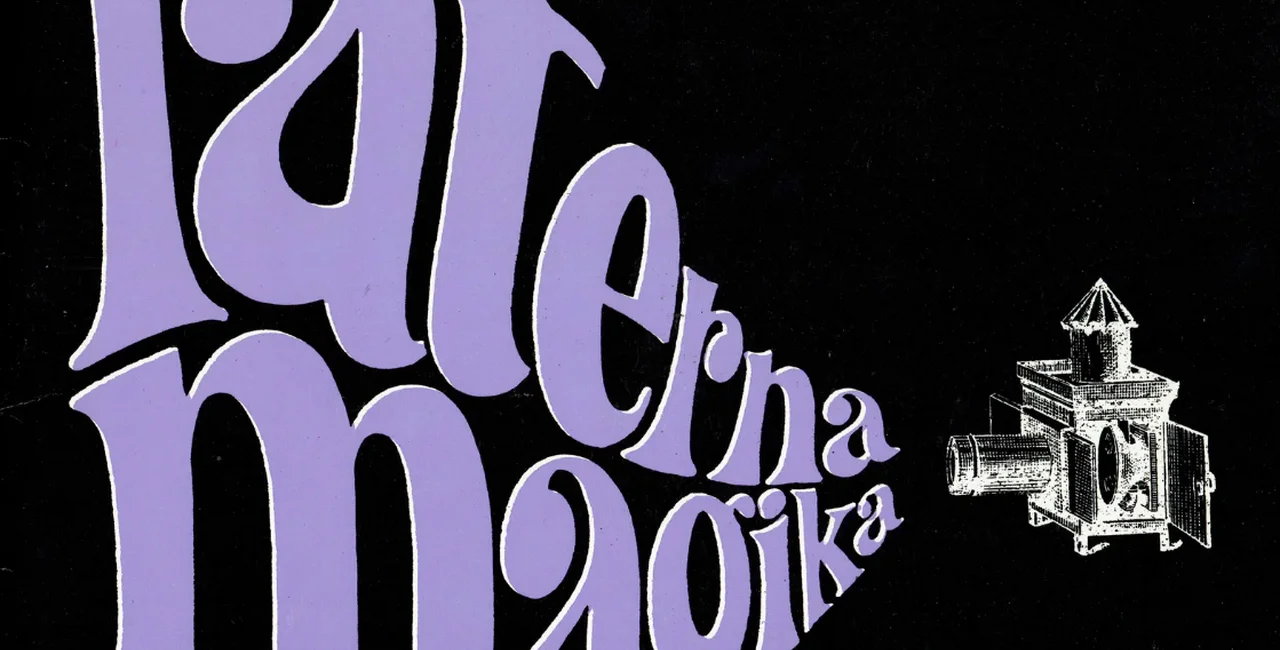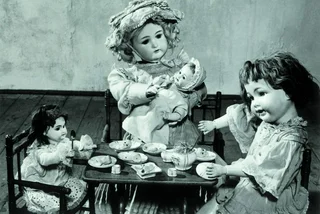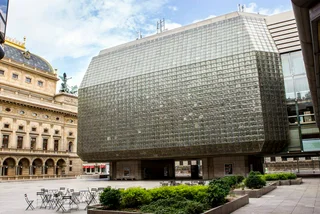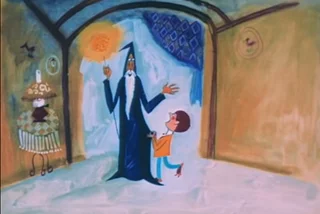The world-famous theater ensemble Laterna magika turns 63 years old today. They launched their long-running blend of multimedia with live performance in Prague after having first been a hit at Expo 58 in Brussels.
While the ensemble is closely associated with the New Stage of the National Theatre, and their logo in bronze emblazons the front of that glass building, that building didn’t exist until 1983. Their original home in Prague was at Palác Adria. Laterna Magika began there on May 9, 1959, as an independent unit within the National Theatre.
The first presentation was a reprise of the show that had been the hit of Expo 58: a series of 24 vignettes also called “Laterna magika.” Actors and dancers seamlessly interacted with filmed segments. The live cast didn’t just act in front of a projected backdrop. Layers of film screens put the live cast in the midst of the recorded action.
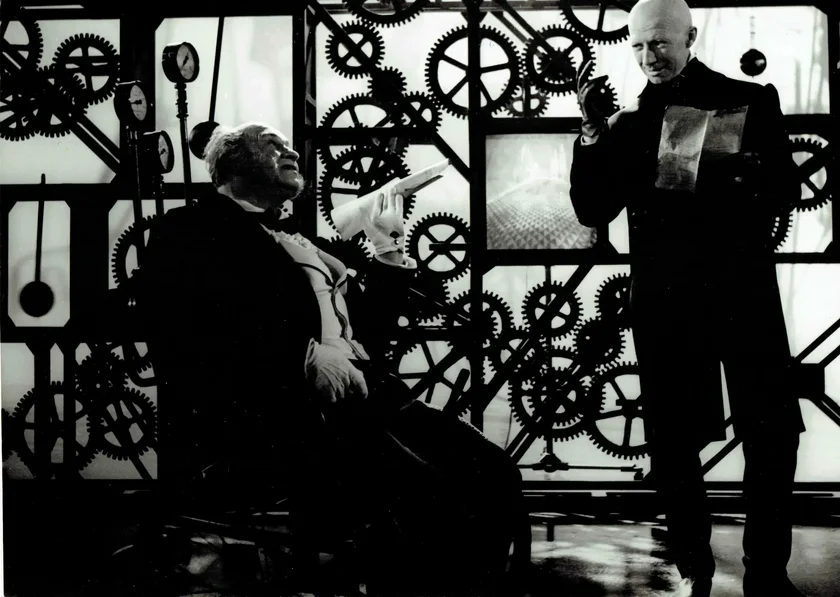
Czechoslovakia hoped the expo could show that the country was capable of something fresh and modern. Theater director Alfred Radok along with his brother Emil and set designer Josef Svoboda were tasked with getting a theater project ready for the Expo that would put the country on the arts map. Miloš Forman, who had not yet started directing films, wrote the script.
Svoboda referred to the use of a projected set as “kinetic scenography” that allowed for much more freedom than with standard theatrical sets. Live productions could now change settings at the same pace as motion pictures.
The show, which ran from April 17 to Nov. 19, 1958, was a huge hit in Brussels. People waited in line for hours to get in. The show was the most popular part of the Czechoslovak pavilion, which had over 6 million visitors. Walt Disney, who saw the show on July 4, 1958, wanted to buy the worldwide rights to the concept so he could install a version in Disneyland. Communist authorities, though, did not allow it.
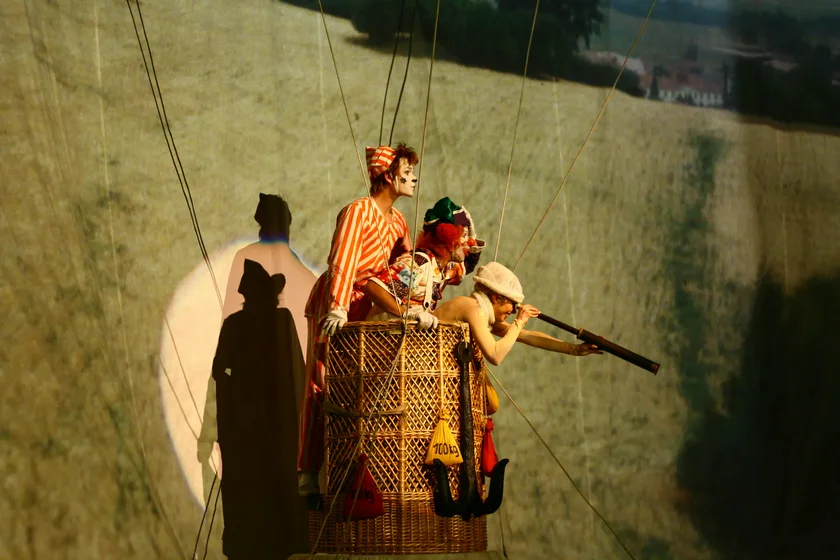
Once the Expo closed, people in Czechoslovakia wanted to see what all the fuss had been about. This led to the creation of a new ensemble, with Alfred Radok as its artistic director. The recognizable name of the hit show became the name of the ensemble as well. Many of the people who had been in Brussels stayed to launch the revival at Palác Adria in 1959.
The troupe also toured. A revised program, “Laterma Magika II,” also simply called the touring program, debuted in Leningrad (now Saint Petersburg) in 1960. There was a clash of ideology, with the then-Culture Minister Václav Kopecký interfering with the show. This led to Radok resigning and not being involved for several years. An attempt at serious programming, a multimedia presentation of “The Tales of Hoffmann” was not successful.
Radok returned in 1966, and was able to turn things around a bit in time for Expo 67, when a new short program called “Revue from the Box” (Revue z bedny). It was performed up to 12 times a day. Radok’s time back at the helm was short-lived. He fled from Prague after the 1968 Soviet-led invasion.
Original co-founder Svoboda took over as artistic director in 1973 and helped to revive the ensemble. He moved away from the revue format and began to develop new, longer shows that were able to benefit from the multimedia approach. He also sought to broaden the appeal to all ages.
The first big success of this era was “Wonderful Circus” (Kouzelný cirkus), a show that debuted on April 15, 1977, and is still running. Director Evald Schorm was mainly responsible for the concept, but Jan Švankmajer had a hand in the story and direction as well. It has not only been in Prague but has toured 17 countries.
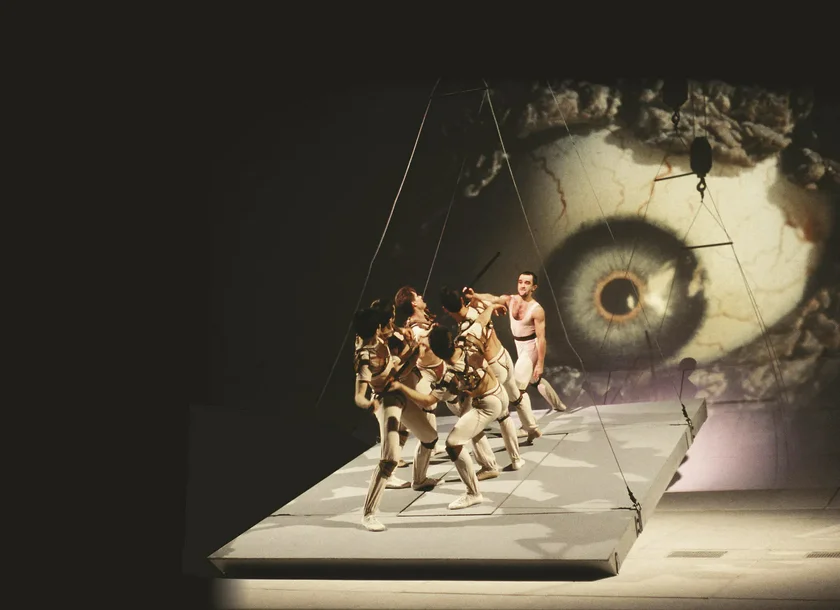
PARTNER ARTICLE
The show recently marked 45 years on the stage but will end its run on Sept. 28 of this year with a total of 6,503 performances. The final show, fittingly, will be on a national holiday. “We would like to pay tribute to this extraordinary work and to all the performers who have taken turns in it over the past 45 years,” current ensemble head Radim Vizváry said.
The reason for the end of the run is that the New Stage is going to be renovated, starting at the end of 2022. Due to the show’s complexity, it can’t easily be transferred to another stage. The current management of Laterna magika will be concentrating on newer titles designed around more modern multimedia techniques when the New Stage reopens.
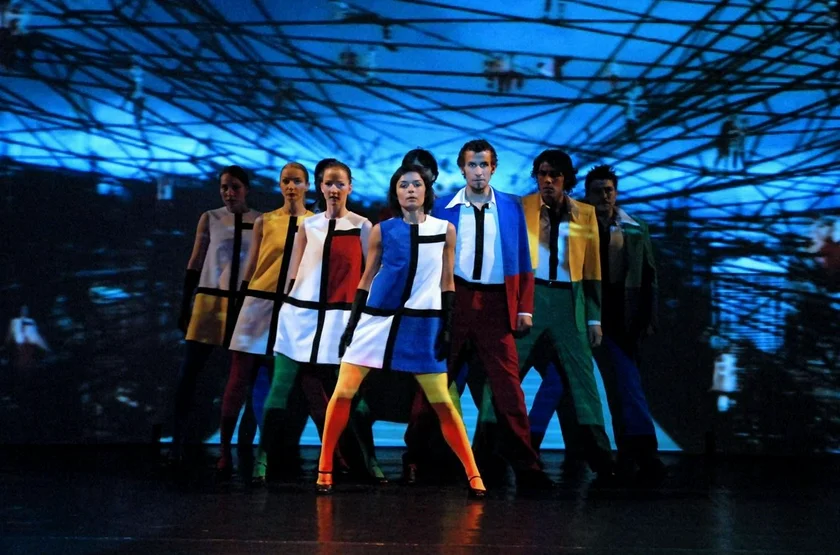
Other hits in the 1970s and ’80s included “Snow Queen” (Sněhová královna) and the drama “Night Rehearsal” (Noční zkouška). The latter was intended to show that the ensemble could present something more serious with an appeal to Czech audiences, and not just extravaganzas for tourists.
In 1984, Laterna magika began to present some shows at the New Stage, the glass building that had just opened next to the National Theatre. But is also continued a program at Palác Adria.
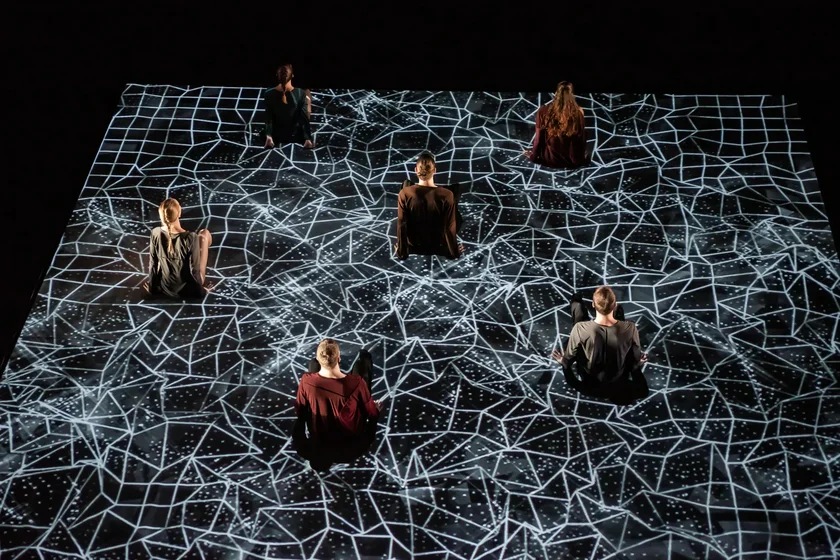
The Velvet Revolution brought big changes. In 1992, Laterna magika became an independent entity, separate from the National Theatre, and began performing all of its shows at the New Stage. The new political situation allowed for more international cooperation. At the same time, new productions embraced more use of modern dance.
Svoboda was still innovating, and he introduced new projection technology for “Graffiti,” a dance-oriented show that premiered in 2001 and would run until 2014. It would be Svoboda’s last show for the ensemble, as he would pass away in 2002 at the age of 81.
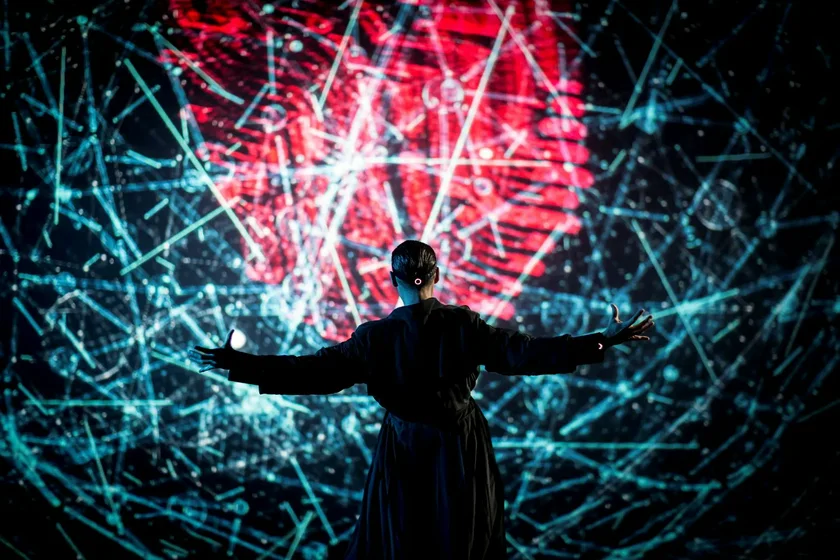
Another new era began in 2010, when the ensemble was re-integrated into the National Theatre. New productions began to reflect contemporary theatrical trends. The play “Anticodes” was inspired by a series of visual poems by Václav Havel.
Another more serious production was “Human Locomotion,” based on the life of motion-study British photographer Eadweard Muybridge. There were also family-oriented productions such as “Extraordinary Voyages of Jules Verne,” based on the famed French sci-fit writer, and “The Garden,” inspired by the work of Czech puppeteer and animator Jiří Trnka.
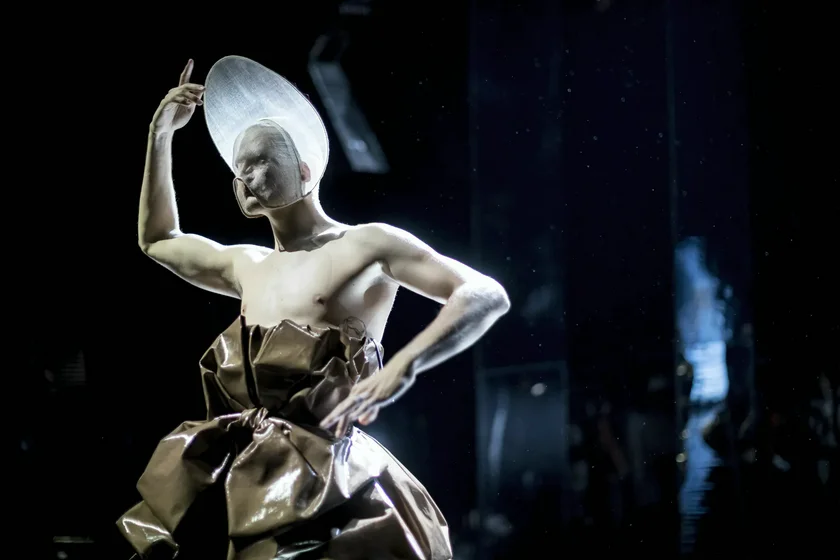
Choreographer Radim Vizváry took over as the artistic director in January 2021. The first new production under his realm was “Paper Story.” Other new titles include “Robot Radius,” based on Karel Čapek’s play “R.U.R.,” and “Poe,” a new production inspired by the Gothic horror writer.












 Reading time: 5 minutes
Reading time: 5 minutes 